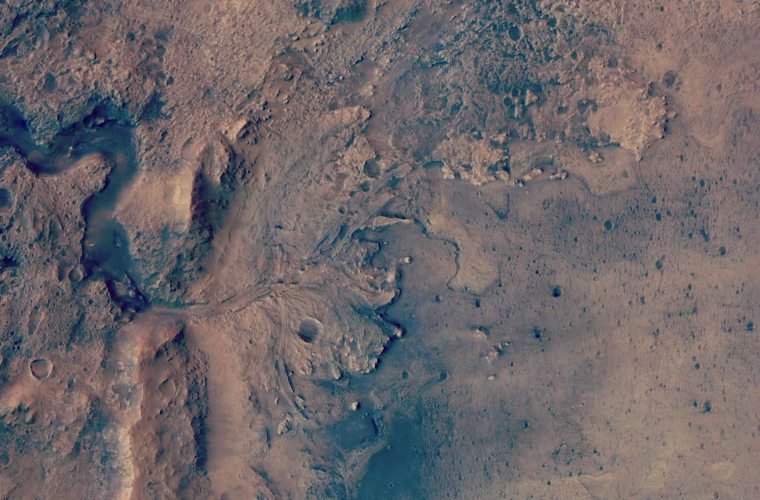An international team of researchers analyzing images collected by NASA’s Perseverance Rover have determined that the red planet previously featured a river delta virtually identical to similar geographic features found on Earth.
Formed approximately 3.7 billion years ago, this ancient river led to the creation of a sizable Martian lake that once occupied Jezero crater, the rover’s current home.
“The study shows how much water flowed into this crater about 3.7 billion years ago,” the press release announcing the published study states, “and indicates where the rover could search for biosignatures or organic material.”
The researchers say the topography of the river delta was so specific in structure to those on Earth that they felt there was no other viable explanation for what the rover’s cameras were seeing.
“The geometry is so typical that there is no equivalent structure that can explain it,” lead researcher Nicolas Mangold from the Universite de Nantes told The Debrief in an email, “thus it is a clear indication of the presence of a lake.”
Background: Was there Water on Mars?
Numerous studies have pointed to a wet past on Mars, including a recent finding that the Jezero crater had not only been home to an ancient lake but also concluded that the body of water had been in place long enough for microbial life to potentially take hold.
This tantalizing result, along with the existing body of work supporting Mars’ watery origins, led Mangold and fellow researcher Sanjeev Gupta from the Imperial College of London to look at images captured by the rover’s high-resolution camera known as SuperCam, hoping to find telltale geological features similar to those found on Earth.
“My participation and that of the French authors is related to the SuperCam instrument,” Mangold told The Debrief, “which is a french-US instrument that acquires high-resolution images as well as spectra to identify rock composition.”
According to Mangold, his team searched through the SuperCam’s images of cliff faces to measure the dip of the rock layers within the cliffs, and the shapes and sizes of the various boulders contained within the cliff faces themselves. This hunt, said Mangold, proved successful, with the team’s results published in the journal Science.
Analysis: Water, Water, Everywhere…
“The key observation is at Kodiak (a feature of Jezero), where the layers pass regularly from horizontal, to inclined, and then horizontal again,” Mangold explained. “This geometry is typical of the geometry of deltas, with ‘topsets’ being river deposits and ‘forsets’ being the river deposits entering inside the lake and falling on the slope at the lake entrance. Then ‘bottomsets’ are muddy deposits formed further.”
Mangold told The Debrief that his team also identified numerous boulders within the cliff faces. Based upon their relative sizes, these large, ancient rocks must have been rolled into place by “high-energy floods.” Furthermore, given the boulders’ location within the strata, these high-energy floods must have taken place at the end of the crater’s filling sequence.
“The boulders are up to 1.5 m large, which require a river to have a huge energy to transport such boulders on a relatively flat slope (1 or 2° of slope on the delta),” Mangold said. “This type of deposit is typical of flash floods or glacial surges, so we don’t know yet what kind of climate change is responsible for these floods, but their presence at the top of the delta is likely not a coincidence.”
Furthermore, Mangold told The Debrief, “our findings indicate that the delta is a Gilbert-type delta, which is typically the type of delta formed when a river flow enters into a standing body of water with low action of waves and no effect of tides.”
Outlook: Now, Can we find Life in the Jezero Crater?
Mangold said that finding and analyzing these types of ancient boulders is particularly useful because they may correspond to rocks that were transported into the lake from the planet’s crust. “Sampling ancient crustal material is part of the main objectives for sample returns,” he said.
When asked by The Debrief how their findings might help the rover team select interesting targets to analyze and potentially stash for a future sample return mission, Mangold said that is what they are doing now. “We are currently discussing how to include these findings in the traverse of Perseverance up to the delta top.”
Follow and connect with author Christopher Plain on Twitter: @plain_fiction

